|
|
|
|
|
|
|
|
|
|
|
|
|
|
|
|
|
|
|
|
|
|
|
|
|
|
|
|
|
|
|
|
|
|
|
|
|
|
|
|
|
|
|
|
|
|
|
|
|
|
|
|
|
|
|
|
|
|
|
|
|
|
|
|
|
|
|
|
|
|
|
|
|
|
|
|
HISTORY OF CLOTHING
|
|
|
|
|
|
|
|
|
|
|
|
|
|
|
|
|
|
|
|
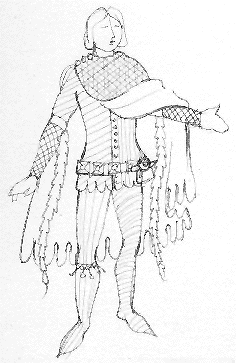 |
|
|
|
|
|
|
|
|
|
|
|
|
|
|
|
|
|
|
|
|
|
|
|
|
|
|
|
Gentleman of late 14th/early 15th centuries in houppeland with funnel sleeves and bottleneck collar
|
|
|
|
|
|
|
This course serves as a guide to those who wish to understand the development of the garments of the Western world. With this basic knowledge of the silhouettes that are created from Egyptian times to the beginning of the 20th century the student can then go to more detailed sources to do extensive research for a particular project and understand the information that is presented. |
|
|
|
|
|
|
|
|
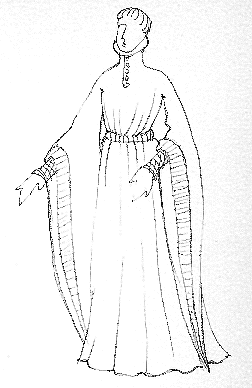 |
|
|
|
|
|
14th Century man in cotehardie, tippets, dagged cape and knightly girdle.
|
|
|
|
|
|
|
|
|
|
|
|
|
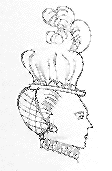 |
|
|
|
|
|
|
|
|
|
|
|
|
|
Elizabethan woman's hat, hair in net and small ruff.
|
|
|
|
|
|
|
|
|
|
|
|
|
|
|
|
|
|
|
|
|
|
|
|
|
Elizabethan Lady in cartwheel farthingale with fan ruff.
|
|
|
|
|
|
|
|
|
|
|
|
|
|
|
|
|
|
|
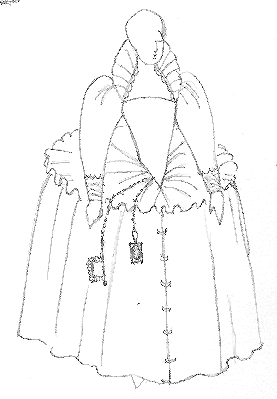 |
|
|
|
|
|
|
|
|
|
|
|
|
|
|
|
|
|
|
|
The course is a survey and presents the principal forms to give the student a starting point. Other sources are suggested that can be used for an in-depth investigation. |
|
|
|
|
|
|
|
|
|
Support system for the cartwheel or drum farthingale.
|
|
|
|
|
|
|
|
|
|
|
|
|
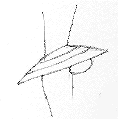 |
|
|
|
|
|
|
|
|
|
|
|
|
|
|
|
|
|
|
|
|
|
|
|
|
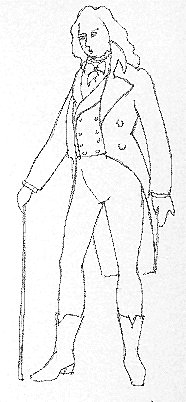 |
|
|
|
|
|
|
The course also includes brief overviews of the society of the times, for no period in history should be thought of as an island but must be considered in the way it develops from that which came before it and in the way it affects that which comes after it. |
|
|
|
|
|
Gentleman of the late 18th century in Van Dyke curls, frock coat and pantaloons.
|
|
|
|
|
|
|
|
|
|
|
|
|
Late 18th century strained back wig and high waisted knee breeches with small fall.
|
|
|
|
|
|
|
|
|
|
|
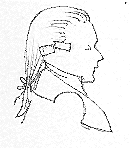 |
|
|
|
|
|
|
|
|
|
|
|
|
|
|
|
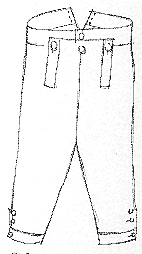 |
|
|
|
|
|
|
|
|
|
Woman in pelisse and coal skuttle bonnet in 1818.
|
|
|
|
|
|
|
|
|
|
|
|
|
|
|
|
|
|
|
|
|
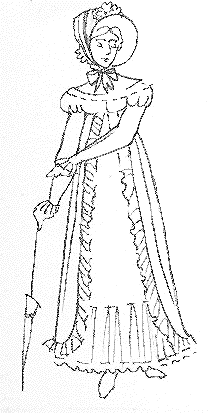 |
|
|
|
|
|
|
|
|
|
|
|
|
|
|
|
|
|
|
|
|
|
A knowledge of the history of clothing is an essential tool for the costume designer who must be aware of the basic shapes as they develop and change through the centuries. |
|
|
|
|
|
|
|
|
|
|
|
|
|
|
|
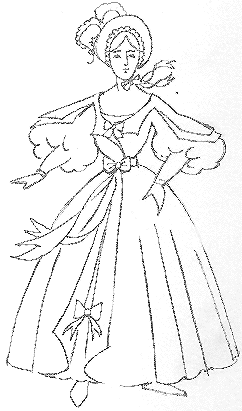 |
|
|
|
|
|
|
|
|
|
|
Handouts will be distributed for each major period outlining the basic silhouettes, but an ability to sketch will help in clarifying notes. |
|
|
|
|
|
|
|
|
|
|
|
|
|
|
|
|
|
|
Promonade dress and bonnet of 1835
|
|
|
|
|









